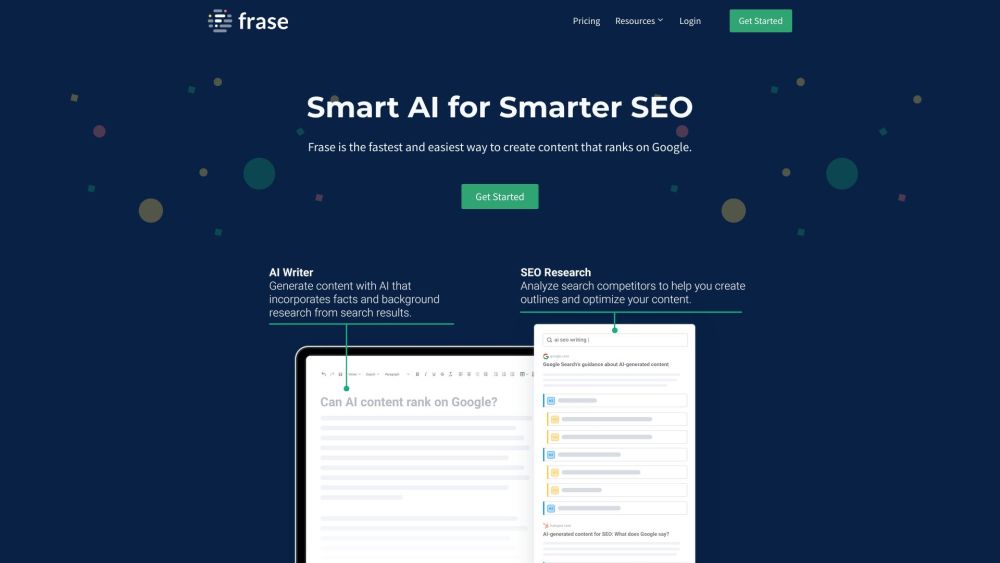With a history of manual processes that are susceptible to errors and delays, compliance and risk management stand out as ideal applications for large language models (LLMs). Professionals tasked with identifying and updating compliance clauses across thousands of contracts, or quantifying and managing risks, can significantly benefit from the time and efficiency gains LLMs offer.
Governance, risk, and compliance (GRC) workflows often create bottlenecks in organizations, hindering responsiveness to customers, suppliers, and various departments. The key challenge lies in automating intricate workflows and strategically integrating contextual intelligence using LLMs while safeguarding data confidentiality and security.
0:05/14:43 – Are You Ready for AI Agents?
Recent interviews conducted by a leading media outlet reveal that LLMs excel at processing and analyzing unstructured data at scale. Companies that are pioneering the integration of LLMs into compliance and risk management are leveraging smaller, more accurate models to revitalize established processes that were previously resistant to robotic process automation (RPA) solutions. Protecting sensitive data within LLMs is a foundational requirement for the firms interviewed by the media.
LLMs Streamlining GRC Processes
GRC workflows are complex and defy simple categorization, often resisting efficiency improvements. While RPA has historically enhanced efficiency, it lacks the deep contextual intelligence and modeling capabilities inherent in LLM architectures. Organizations' growing need for enhanced GRC knowledge and efficiency is driving the GRC automation market, projected to grow at a double-digit compound annual growth rate (CAGR) through 2028. According to Gartner, the GRC market was valued at $39.4 billion in 2022 and is expected to reach $76.4 billion by 2028, reflecting an 11.6% CAGR from 2023 to 2028. Notably, legal departments are expected to automate 50% of legal work related to major corporate transactions by this year and will triple their technology spending by next year.
How Two Companies are Applying LLMs at Scale
To understand how leading software providers are innovating in this arena, a media outlet discussed strategies employed by 4CRisk and Relativity. Relativity has partnered with WinWire, a top Microsoft partner, to harness Azure and generative AI to enhance e-discovery, compliance, and risk management within their aiR suite. WinWire’s Center of Excellence on generative AI provides clients with top-tier expertise in generative AI and Azure Open AI.
WinWire has been pivotal in assisting Relativity in modernizing its IT architecture, including migrating on-premises applications to Azure Cloud. This collaboration has enhanced flexibility, security, and service delivery speed for Relativity’s clients.
Keith Carlson, Chief Technology Officer at Relativity, explained in a recent interview how the company's tech stack relies on Azure’s cognitive and real-time services to ensure an exceptional customer experience across the aiR suite. These services facilitate 24/7 global support and quicker service turnaround.
Relativity has seen significant cost savings from cloud-based improvements, with infrastructure and operational costs reduced by approximately 40% and 150%, respectively. These advancements have simplified operations and enhanced the scalability of Relativity’s services, essential for managing large document volumes.
Carlson noted that LLMs are revolutionizing every aspect of GRC, with marked improvements already evident in e-discovery. They demonstrate predictive accuracy in identifying risks, critical for proactive compliance management. The partnership with WinWire has bolstered system reliability, essential for the extensive data processing required for e-discovery, where downtime can be costly.
“Being in the cloud, ensuring agility, and our ability to adapt are critical. Open Azure AI services integrated with sentiment analysis, cognitive services, and translation capabilities contribute to optimizing the e-discovery process,” Carlson remarked during the interview.
4CRisk's Tailored Approach to LLMs
Venky Yerrapotu, founder and CEO of 4CRisk, is pioneering the development of LLMs specifically for compliance and risk management challenges. He emphasized, “We build language models for the Risk and Compliance domain that prioritize data privacy and security while maintaining efficiency.”
Overcoming Challenges in LLM Implementation
Carlson and Yerrapotu identified integration and achieving practical outcomes as key challenges in scaling LLM use for compliance and GRC. Carlson advised taking a holistic integration approach, stating, “Our goal is to enhance the accuracy and efficiency of our existing systems while seamlessly integrating into legal and compliance frameworks.”
Yerrapotu highlighted that LLM adoption in GRC workflows enables automation of complex data processes that previously relied on heavy human involvement. He emphasized a specialized, domain-specific approach: “By developing tailored models, we ensure robust privacy and efficiency for sensitive GRC tasks.”
He added, “Using smaller, specialized models allows us to scale compliance solutions globally without excessive costs. These models adapt quickly to regulatory changes.”
Prioritizing Privacy and Security in AI
“Our privacy-by-design philosophy integrates encrypted data and operates within secure cloud environments, conforming to the strictest privacy laws,” noted Yerrapotu.
Both 4CRisk and Relativity have architected their products to withstand LLM vulnerabilities, ensuring compliance across different jurisdictions while addressing regulatory and client-specific requirements. WinWire’s expertise has prepared Relativity to navigate a variety of international legal frameworks, essential for their global operations. Carlson emphasized Azure’s global capabilities in meeting local legal obligations, which is a significant challenge for tech firms.
The need for LLMs to adapt to diverse regulatory environments is urgent, particularly as enterprises deploy these models across different jurisdictions, making compliance a critical factor for international operations.
Carlson underscored, “At Relativity, we continuously refine our LLMs to stay agile and compliant across borders. Our technology evolves rapidly with regulations, ensuring comprehensive support for our global clients.”
He elaborated on the complexities of maintaining adherence to high standards: “Navigating through international data privacy laws is challenging. Our LLMs employ a dynamic framework that adjusts to new regulations in real-time, crucial for uninterrupted client service worldwide.”
Yerrapotu added insights into 4CRisk’s specialized models: “We prioritize creating smaller, domain-specific LLMs that achieve greater precision and seamlessly integrate with various regulatory frameworks, ensuring efficiency and adaptability without sacrificing privacy or security.”
Building Trust Through Transparency
Both organizations, along with others interviewed, emphasize the importance of building trust with clients through transparency regarding the development and scaling of LLMs for specific needs.
Carlson articulated Relativity’s commitment to a robust privacy and security strategy, stating, “Trust is foundational to our client relationships. By ensuring our LLMs are powerful, secure, and compliant, we instill confidence in clients that their sensitive information is protected.” Through their unwavering commitment to privacy and innovative use of LLMs for real-time compliance and risk management, 4CRisk and Relativity are setting new industry benchmarks for security in the evolving landscape of generative AI-driven GRC.




